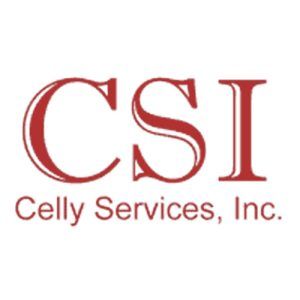Background: Millions of workers drive or ride in vehicles to work, and some of us must drive as part of a work activity. According to the U.S. Bureau of Labor Statistics, transportation accidents accounted for more than 2,000 fatalities in 2022. Transportation fatal occupational injuries are almost three times the next nearest cause. According to the National Institute for Occupational Safety and Health (NIOSH), the total cost of motor vehicle crashes to U.S. employers is over $39 billion annually, with an average cost of $75,000 per non-fatal injury and ten times that at $751,000 per fatality. All workers are at risk of crashes, whether driving is the main or incidental job duty.
Qualifications: All employees driving dealership vehicles must have a valid state driver’s license and provide DMV records to their HR manager. Based on the driving record, the employer may deny driving privileges. Any changes to the driving record, such as a speeding ticket or DUI, must be communicated to your manager immediately.
Your Mindset: Before getting in front of the driving wheel, ask yourself if you are ready to drive in a safe manner. Have you had a good night’s sleep? Are you rested and fully alert to drive a vehicle? Is there any mental anguish that is disturbing you and compromising safe driving? Your ability to drive safely is best answered by you. If you are not ready, let your manager know and do not drive a vehicle.
Safety Checks: Before entering the vehicle, always walk around the vehicle. Are the tires properly inflated? Are there any visible fluid leaks? Are the front and rear windows clean? Are there any loose packages or items on seats or dash? These can become flying projectiles during turns or if the vehicle is suddenly halted and can distract you from emergency maneuvers. Check the glove box for company papers, including insurance papers. Keep an “Accident To-Do List” that includes emergency phone numbers. The list is a ready referral of the information you must gather if you are involved in an accident. Once seated, start the vehicle and check: Are the wipers working properly? Are there any fault messages on the dashboard? Dealer drivers must ensure all in the vehicle are belted. Do not move the vehicle until all are secured. Infants and children must be secured per state law in infant car seats or boosters as selected and installed by the parents.
Traffic Laws: All employees must follow the mandated traffic laws, such as staying within speed limits, wearing seat belts and following the prohibition of texting and talking on the cell phone.
- Do not drive under the influence of alcohol or drugs. Driving under the influence is illegal and prohibited.
- Obey all speed limits and traffic signs and signals, such as stop, slow, yield, bicycle and pedestrian lanes and traffic lights. Reach a complete stop at stop signs.
- Yield to other drivers who have the right of way at an intersection.
- For children in the vehicle, you must use the appropriate child safety seat or booster seat for their age and weight. Be sure to ask the customer with a child to install their own seat in your vehicle. Do not do it for them, as this is a liability for your employer and you.
- Keep a safe distance from other vehicles and pedestrians.
- Always use your signals and mirrors when changing lanes or turning, even if there appear to be no other vehicles or pedestrians.
- Yield to pedestrians and bicyclists, even when they are not on a crosswalk.
- Always pull over to let emergency vehicles pass.
- Do not pass a school bus with flashing red lights unless you are on the opposite side of a divided highway.
Other Considerations: Following traffic laws is only the beginning. Also note the following:
- When entering/exiting a vehicle, parking or pulling away, be aware of others and be cautious, especially in an active driveway.
- While backing up, use your rear-view mirrors and turn your neck to ensure there is no traffic in your intended pathway.
- Keep a minimum of two-second distance from the vehicle in front of you. If the vehicle were to stop suddenly, you should have enough time to brake. Increase the distance to at least double (that is, four seconds) when at higher speeds and in conditions of rain, sleet, ice, snow, poor visibility and high winds to allow for more reaction time.
- When an area is congested or has crowded conditions, slow down and exercise extra caution while driving.
- Despite less traffic after dark, the death rate from accidents at night is three times higher. Lights from oncoming traffic, especially LED lights, can have a blinding effect, so slow down. Human vision diminishes with age, especially at night. When you can see only a few feet ahead, there is less time to react.
- Stay alert to other drivers who may be driving at high speed or erratically. “Tolerate and separate” is the best policy. Remember, your objective is to get to your destination safely and on time. A driver may not be licensed to drive and, worse, may be under the influence of alcohol or other drugs. Stay alert and distance yourself.
- Every year, hundreds die in road-rage-related accidents. When involved with possible rage, keep your cool and let the other driver(s) have their way. If they override your right of way, let them go to avoid a fender bender or worse.
- Avoid aggressive driving and keep your cool in traffic! Be patient, stay calm and be courteous to other drivers. Do not take other drivers’ actions personally.
- Reduce stress by planning your route ahead of time, even with automated mapping systems, and allow plenty of travel time. Take the maps and directions along.
- Avoid distractions, such as loud volumes, adjusting the radio or other controls, eating or drinking and talking on the phone. Dual earphones are not permitted. If you have a hands-free device for your phone, you may use the phone only if the dealership policy permits. Talking on the phone while driving, even with a hands-free device, causes distraction, and hence it is a safety concern. Again, follow the dealership policy on cell phone use.
- Be aware of your surroundings. Continually search the roadway to be alert to situations requiring quick action. If the vehicle in front slows down, you must slow down. If the vehicle ahead is a big truck, your frontal visibility is compromised. You must slow down and increase your distance. If possible, change lanes so you can see ahead. Scan your mirrors frequently. Watch out for animals, bicyclists, motorcyclists and/or pedestrians. Anticipate traffic issues and be ready to respond quickly.
- Stop about every two hours for a break. Get out of the vehicle, stretch, take a walk and get refreshed. Set realistic goals for the number of miles you can drive safely each day.
Accidents: Report all accidents to management immediately. If you have a cell phone, pull over safely and call your manager. Use your phone to document the accident details. The “Accident To-Do List” in the glove box may help you document as well. Do not be forthcoming in acknowledging your fault for the accident. During and immediately after an accident, your judgment is likely to be incorrect. Later investigation may show otherwise.
Conclusion: Developing safe driving habits and following safe driving protocols help keep you and your vehicle safe and protect others’ lives, health and property. Driving safely is a condition of employment. Employees involved in at-cause accidents can be subject to disciplinary action up to and including termination. Safety is not only a personal responsibility but also a legal obligation!
Note: There is a separate training memo for test drives. This is a general safe driving training course for all employees to take at work.
DISCLAIMER: The contents of this newsletter are for informational purposes only and are not to be considered as legal advice. Employers must consult their lawyer for legal matters and EPA/OSHA consultants for matters related to Environmental, Health & Safety. The article was authored by Sam Celly of Celly Services Inc., who has been helping automobile dealers in Arizona, California, Hawaii, Idaho, Nevada, New Mexico, New York, Texas and Virginia comply with EPA and OSHA regulations for over 35 years. Sam is a Certified Safety Professional (No. 16515) certified by the National Board of Certified Safety Professionals. Sam received his BE (1984) and MS (1986) in Chemical Engineering, followed by a J.D. from Southwestern University School of Law (1997). Sam is a member of the American Chemical Society (No. 31176063), American Industrial Hygiene Association (No. 124715), and National Association of Dealer Counsel (NADC). Sam also serves on the Board of the Orange County American Industrial Hygiene Association and on the CA Industrial Hygiene Council (CIHC). Our newsletters can be accessed at www.epaoshablog.com. Your comments/questions are always welcome. Please send them to sam@cellyservices.com.









